On this page:
✔️ Motivation
✔️ Background Info
✔️ Your Task
✔️ Requirements
✔️ Handing in
✔️ Grade Breakdown
Motivation (Why are we doing this?)
The goal of this lab is to provide you some experience with recursive backtracking.
Background Info
Recursion is the practice of breaking a complicated problem down into small, trivially solvable pieces, and then merging those pieces together to solve the full problem completely. Recursive backtracking however, takes this process to the next level. This method will allow us to discard incorrect pieces & attempt to re-solve that part of the problem with different parameters.
A Lesson on Backtracking
Backtracking is a systemic method to iterate over all possible configurations of a search space. The general idea is:
0.) Is the task complete? Return true if so.
1.) At any given step, enumerate all possible actions.
1.2.) Make one of the enumerated actions
1.3.) Evaluate the new partial solution. If we obtain 'True', also return 'True' else try a different action
2.) If we run out of moves, return 'False' to backback to a previous stage of the problem
Let’s take a look at an example; solving a game of Sujiko!
The purpose of this game is to place the numbers 1-9 on the board such that the sum of the four numbers around a circle equal the number in a circle. How would you solve this puzzle?
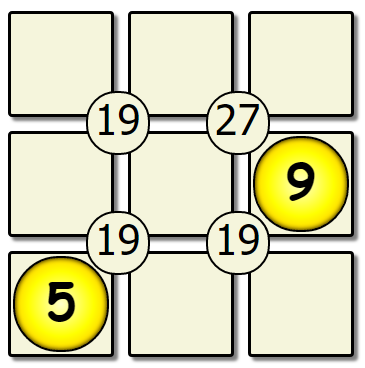
Lets take a look at an algorithm:
0.) Is the win condition met? If so, return true. Otherwise, continue on.
1.) At any given step, record all of the missing values.
1.2) Place the first missing value into the first open spot on the board.
1.3) Recursively call this function with the new board. If we obtain True, also return True.
Otherwise, replace the number with the next missing value.
2.) If we tried all of the missing values & none worked, return False so the previous version of this board can try another number.
Lets try applying this algorithm to our board:
| First Pass | Second Pass | Seventh Pass |
|---|---|---|
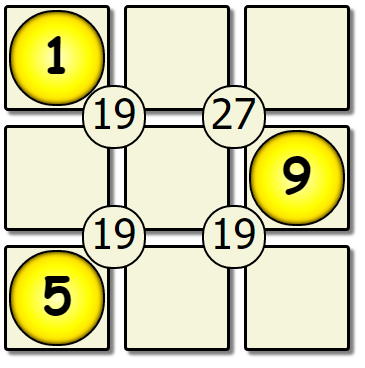 |
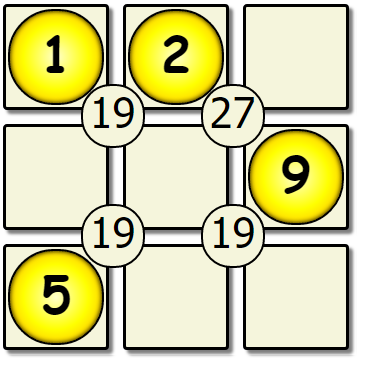 |
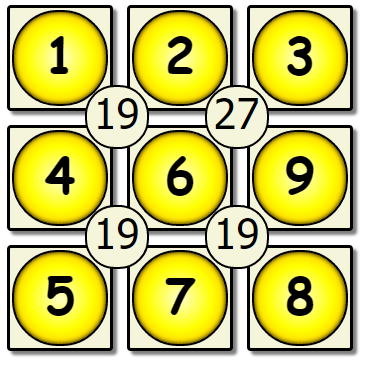 |
We’ve hit our first dead end, & there are no more missing values to place. This solution is not correct, so we backtrack to the previous version of the board, and change the number that was placed.
| Sixth Pass Revisited | Sixth Pass Modified | Seventh Pass Revisited |
|---|---|---|
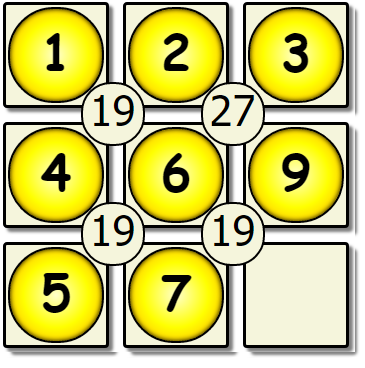 |
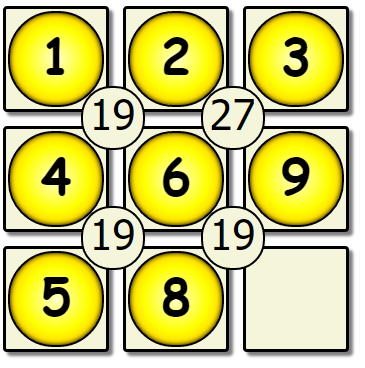 |
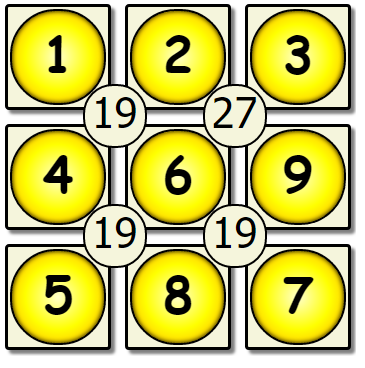 |
This yields another dead end, so we would backtrack back to the 5th empty spot, and change the value there.
| Fifth Pass Revisited | New Fifth | New Sixth Pass |
|---|---|---|
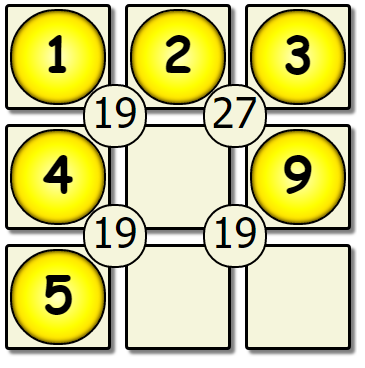 |
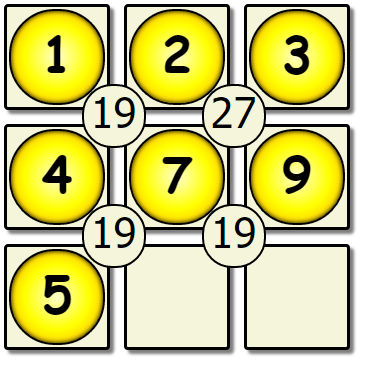 |
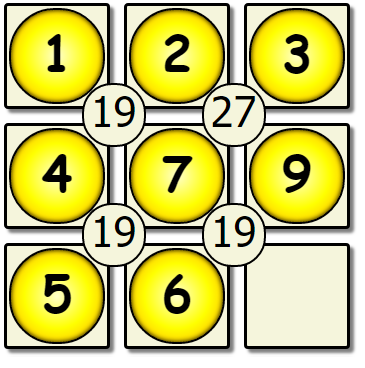 |
This process would repeat until we have a solution board:
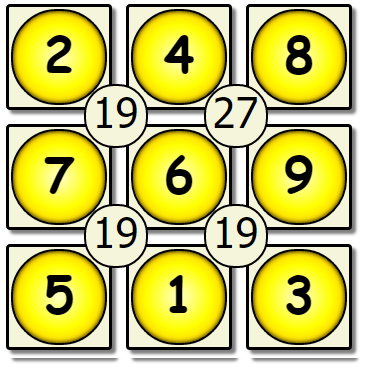
Your Task
Review each of the following problems and fulfill the requirements for this lab.
N-Queens Problem
The N-Queens problem is the task of placing eight chess queens on an NxN chessboard such that no two queens can attack each other. Let’s take a look at this empty 8x8 chess board:
In chess, the queen may move any number of squares in any single direction (horizontally, vertically, or diagonally).
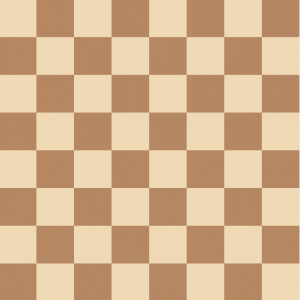
How would you solve the problem? Let’s take a look at pseudocode for the strategy you could use.
1) Start in the leftmost column
2) If all queens are placed
return true
3) Try all rows in the current column.
Do following for every tried row.
a) If the queen can be placed safely in this row
then mark this [row, column] as part of the
solution and recursively check if placing
queen here leads to a solution.
b) If placing the queen in [row, column] leads to
a solution then return true.
c) If placing queen doesn't lead to a solution then
unmark this [row, column] (Backtrack) and go to
step (a) to try other rows.
3) If all rows have been tried and nothing worked,
return false to trigger backtracking.
See this online step-by-step visualization for this problem.
The following is the result of the recursive call tree for solving a 4x4 puzzle:
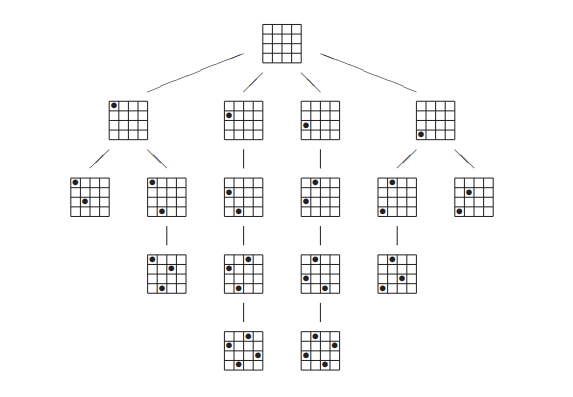
Download the code to solve the N-Queens problem and work to understand how the backtracking is working to solve the problem. After you can follow the code, move on to the next section.
Sudoku!
In Sudoku, you are given a partially filled 9x9 board with the objective of filling each cell such that each row, column, and 3x3 subgrid contains all of the digits 1-9. You can not change the given values. As an example, here is a puzzle:
| Sudoku Puzzle | Sudoku Puzzle Solved |
|---|---|
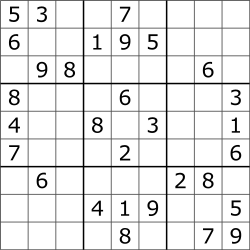 |
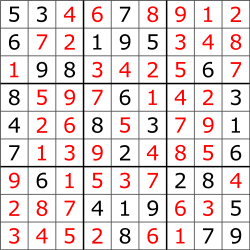 |
Now that you know the rules, finish the given code for solving a Sudoku puzzle.
Your strategy will be very similar to the solution for N-Queens:
1) If we have filled the entire board, return true
2) For each digit 1-9:
- If this digit can be placed in this cell
- Place the digit
- Recurse to the next empty cell.
- If that recursive call returns true
- Return true
- else
- Try the next digit
3) If none of the digits yielded a valid solution, backtrack.
Before starting the code for this problem, work through a few rounds on paper to ensure you have the correct methodology.
Re-N-Queens: A different perspective
In the given solution for N-Queens, the puzzle is solved by changing the row a Queen is placed on in a given column.
Write a function that instead solves the puzzle by changing the column a Queen is placed on in a given row.
In other words, instead of solving the puzzle left to right, solve it top to bottom.
Requirements
- Comment the
solve_rec()function in the solution to the N-Queens problem to show you fully understand the solution. - Copy the
solve_rec()function and modify it such that it solves the N-Queens problem as described in Re-N-Queens: A different perspective. - Finish the Sudoku program using recursive backtracking.
Handing in
Please call a TA over to get checked off before leaving your lab section (regardless of how far you got). If you want to continue working on your lab after your lab section, come to hours to get checked off.
Grade Breakdown
This assignment covers the topic of recursive backtracking and your level of knowledge on it will be assessed as follows:
- To demonstrate an
awarenessof these topics, you must:- Successfully meet requirement 1
- To demonstrate an
understandingof these topics, you must:- Successfully meet requirements 1 and 2
- To demonstrate
competenceof these topics, you must:- Successfully meet requirements 1 through 3
To receive any credit at all, you must abide by our Collaboration and Academic Honesty Policy. Failure to do so may result in a failing grade in the class and/or further disciplinary action.
Original assignment by Dr. Marco Alvarez, used and modified with permission.